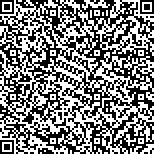下载中心
优秀审稿专家
优秀论文
相关链接
摘要

利用2001年—2012年MODIS分裂窗算法反演得到的1 km分辨率地表温度产品分析了北京城市热岛效应。首先计算北京2001年—2012年地表温度年平均值,其次利用半径法确定热岛足迹并计算热岛容量。结论如下:(1)热岛足迹及热岛容量昼夜差异明显,2012年白天热岛足迹是夜间的1.5倍,这是由于城市下垫面热特性差异及人为活动的综合影响。(2)2001年—2012年北京城市高温区在空间上向南北扩展,热岛足迹和热岛容量呈阶段性增长。2010年白天热岛足迹最大,半径为28 km,面积是2001年的2.4倍。当热岛足迹相同时,城市绿地和水体功能区的分布和布局方式等因素能够影响热岛容量。城市建设用地和农村居民点对城市热环境贡献率明显高于其他土地利用类型。当建设用地面积比例超过50%时,区域会产生显著的热岛现象。(3)根据北京热岛足迹及容量时空动态变化特征,提出改善城市热岛的措施。
Urban thermal environment has had a far-reaching impact on local climates and on the quality of living environments. Distinct differences between urban areas and surrounding rural areas have been widely observed; this phenomenon is called the Urban Heat Island (UHI) effect. The conditions in surrounding rural areas also affect the magnitude of UHI. UHI intensity was inversely correlated with rural Land Surface Temperature (LST). However, simply comparing the difference in LST between urban land and the surrounding rural area is not an effective method to quantify the intensity of UHI. Changes in urban construction land also varied in the rural area. Hence, the problem can be transformed into determining how areas affected by the UHI can be identified spatially.
This paper researched the UHI effect during the period between 2001 and 2012 in the Beijing metropolitan area based on MODIS LST products obtained by using split-window algorithm. This paper presented the concepts of UHI footprint and capacity to spatially distinguish the areas affected by UHI. Then, the relationship between land use and UHI footprint was analyzed by using the radius method, and the influence mechanism of land use on UHI was discussed.
UHI footprint and capacity differ significantly during daytime and nighttime. The area of urban island footprint in the daytime is 1.5 times that in the nighttime in 2012. This finding is due to the comprehensive factor of differences in thermal characteristics of urban land and human activities. The high temperature zone spatially extended to the north and south during 2001—2012, and UHI footprint and capacity exhibited a periodical growth. The largest UHI footprint appeared in daytime in 2010, that is, the radius was 28 km, and the area of the UHI footprint was 2.4 times that in 2001. UHI capacity is affected by the distribution and planning of urban green space and water function zone, even if UHI footprints are not different in two periods. The contributions of urban land and rural residential to UHI are significantly higher than the contributions of other land use types. When the area of construction land is more than 50%, the region produces obvious UHI.
This paper presented improvement measures according to the spatiotemporal character of UHI footprint and capacity. Construction scale on the underlying surface is the critical mechanism of the urban thermal environment. This study can serve as a guide to plan and manage the urban thermal environment in cities, and it can help to control UHI effectively.

